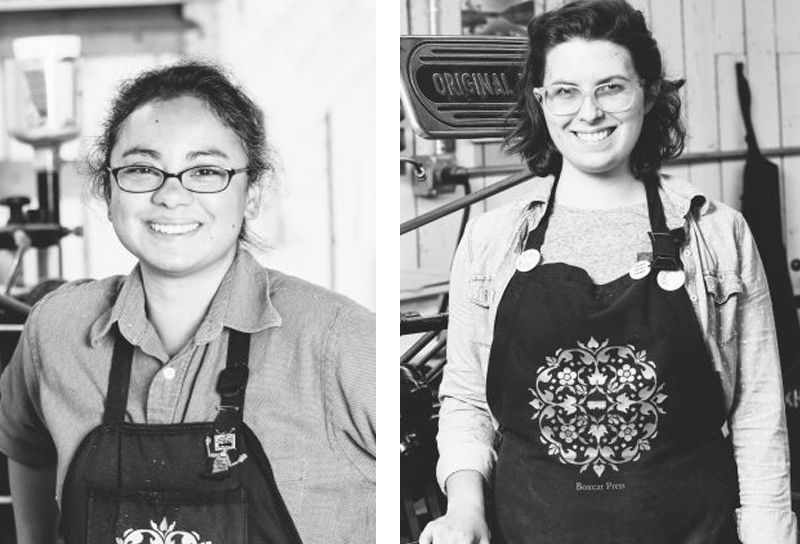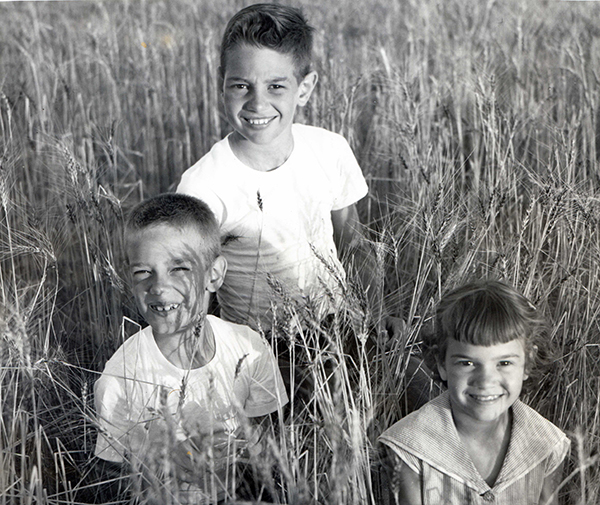A new year and a fresh new decade signals one thing: a new wave of brilliant letterpress! We polled our printers here at Boxcar Press to give us their quick, top printing tips to help jumpstart 2020. Perhaps a few of these nuggets of wisdom will make their way into your next printing adventure!
Want to share your top tip? Let us know in the comments section below!

CARRIE – Heidelberg Windmill Operator
If you have a thin rule line or the end of a line of type that is getting too blobby, try using an “end cap” of a scrap photopolymer plate (like a small rectangle of it) and put it beyond the trim area. This is so that the rollers use it like an inking roller bearer strip. It helps keep the pressure off that one trouble spot.
MADDIE – Heidelberg Windmill Operator
When beginning a job, do a dry paper test run. There shouldn’t be any impression or ink. This run is so you can adjust the tilt sucker bar to where you want it, make sure it isn’t double-feeding, adjust the tempo of the paper pick-up and more. Getting this out of the way is one less thing you don’t have to fuss with while in the middle of a job.

JEFF – Kluge Operator (Foil)
For foil on a Kluge, make sure you are using the correct suckers and are maintaining them. Metal suckers work for text weight and envelope liners. Rubber suckers are good for text weight, coaster stock, thinner leather, or textiles. To keep them in shape, I’ll use a bent paper clip or something small to clean out any fibers or lint that may get up there.
LEANNA – Heidelberg Windmill Operator
If you are doing something double-sided and are trying to avoid show-through on the other side, use glassine board in the packing.
LOU – Heidelberg Windmill Operator
Printing envelopes on the Windmill with a lay pin is a bit labor-intensive but it can work. You’ll need to cut out a shape in the tympan where the lay pin will “nestle” into. This is so that the pin has a place to rest into and not mark the envelope when the press closes. Or alternatively, use our Boxcar Press swing away lay gauge so you don’t have to worry about marks.

JAKE – Heidelberg Windmill Operator
When working to print lighter pastel ink colors on the Heidelberg Windmill try the following:
First, use an aggressive cleaner (Putz Pomade comes to mind) to help clean out any remaining ink from a previous run.
Make sure the ink is mixed up correctly and proportionately. Having a ready-to-go pre-mixed stock of ink is very handy (like Cool Grey 1 or other ink colors that contain a lot of Transparent White).
Use a very small bit of ink (small dabs or dots) and slowly add it to the roller. This first ink test run will mostly be checking consistency and to see if there is any ink leftover from a previous run. Run make-ready scrap through the press to see where you stand.
If you are running large solids for foil on a Kluge and are only getting the center to print, adjust the base itself using the screws. Most of the time, the base isn’t hitting flush and making these adjustments will help. Use glass board with soft packing on top. Try using a glue stick to glue the soft packing together as well. The compressed paper and glue makes for an even surface.
PAUL – Heidelberg Windmill Operator (Foil)
When doing foil on the Windmill, getting the right temperature for release can be tricky. Start by keeping good notes at regular intervals on foil release temperatures & times to keep things organized. A journal, jotter, or dedicated scrap of paper will do. When on the press for a job, regularly write down the temperatures so you can go back to it if you need to re-run the job. This helps a lot.

STAN – Heidelberg Windmill Operator (Foil)
Wear comfortable shoes and don’t be distracted by smartphones as you’ll need to be listening to the sounds your press is making. For example, there is a subtle difference in the whooshing sound when the suckers are picking up the paper correctly…. and when it’s not.
PAT – Heidelberg Windmill Operator
If you are printing black letterpress on a Heidelberg and want a richer, deeper coverage, try a double-hit of the black ink runs (two regular ink run passes — one on top of the other). This helps reduce over-inking. Take care that you are in perfect registration.
BILL – Heidelberg Windmill Operator
Use transparent tape on the Windmill rails to help even out high and low spots. A piece here or there can make all the difference in the laying down of ink along the rails.





















